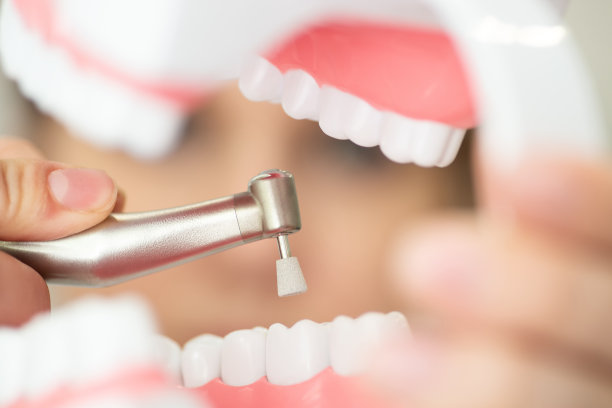The Complete Guide to Extracting a Tooth Safely and Effectively for Optimal Oral Health
Summary: Extracting a tooth can be a daunting experience for many, but with the right knowledge and preparation, it can be done safely and effectively. This guide focuses on the essential aspects of tooth extraction, emphasizing the importance of professional help, preparation, post-extraction care, and recognizing potential complications. By understanding these key components, individuals can ensure optimal oral health while minimizing discomfort and risk. Whether it’s about understanding the procedure or knowing how to care for your mouth afterward, this comprehensive guide aims to equip readers with the necessary insights for a smoother tooth extraction experience.
1. Importance of Professional Help in Tooth Extraction

When it comes to extracting a tooth, the most crucial step is to seek professional help. Dentists are trained with the expertise to perform extractions safely, ensuring that the procedure is as painless as possible. Attempting to extract a tooth at home poses significant risks, including severe pain, excessive bleeding, and infection. Professionals utilize sterile techniques and the right instruments to minimize these risks.
Furthermore, a dentist can assess the condition of the tooth and surrounding gum tissues accurately. In some cases, an X-ray may be necessary to evaluate the tooths roots or detect any underlying issues that could complicate the extraction. Neglecting to seek professional help can lead to a host of complications that could otherwise be easily managed.
An experienced dentist can also provide anesthesia options to control pain and anxiety during the procedure. This attention to patient comfort significantly impacts the overall experience and success of the extraction. Hence, always consult with a dental professional before proceeding with any tooth extraction.
2. Preparing for a Tooth Extraction Procedure
Preparation for a tooth extraction involves several essential steps that can significantly affect the procedures outcome. First and foremost, patients should disclose their complete medical history to the dentist, including any medications they are taking. This information helps the dentist ensure that the extraction process takes into account any potential complications.
Secondly, it’s crucial to follow the dentist’s pre-operative instructions. This may include fasting beforehand, especially if sedation will be used. Proper planning can reduce anxiety and lead to a smoother process. Patients are also encouraged to arrange for transportation home after the procedure, as anesthesia can impair their ability to drive.
Additionally, understanding what to expect afterward can alleviate any fears regarding the procedure. Patients should receive guidance on potential discomfort, swelling, and the expected recovery timeline. By adequately preparing, patients can minimize anxiety and ensure a more positive tooth extraction experience.
3. Post-Extraction Care for Optimal Recovery
The post-extraction phase is critical for ensuring optimal recovery and minimizing complications. After the procedure, it is essential to follow the dentists instructions carefully, including how to manage bleeding and swelling. Gently biting down on gauze pads helps control bleeding, and patients should know that some bleeding is normal in the initial hours after extraction.
Ice packs can be applied to the outside of the face to reduce swelling, which is common in the first day following the extraction. However, patients should avoid using heat immediately after the extraction, as it can increase swelling and discomfort. Taking pain relievers as prescribed can significantly ease discomfort during the recovery process.
Furthermore, maintaining good oral hygiene is vital, but patients should be cautious for the first few days. Brushing or rinsing near the extraction site should be done gently to avoid dislodging the blood clot that forms in the socket. A follow-up appointment may be necessary to ensure that healing is progressing as expected.
4. Recognizing and Managing Potential Complications
While tooth extractions are generally safe, its essential to be aware of potential complications that may arise. One common issue is dry socket, which occurs when the blood clot at the extraction site dissolves or dislodges before healing is complete, leading to intense pain. Symptoms include severe pain that starts a few days after the extraction, bad breath, and visible bone in the socket.
If dry socket is suspected, it is crucial to contact the dentist for proper management. Treatment typically involves cleaning the socket and applying a medicated dressing to promote healing. Patients should also be cautious about adhering to post-operative instructions to lower the risk of such complications.
Infections are another potential concern after a tooth extraction. Signs of infection include fever, persistent pain, and swelling that worsens over time. Promptly reporting these symptoms to the dentist is crucial for effective treatment. Overall, being vigilant about one’s health and responding to any unusual symptoms can significantly enhance recovery outcomes.
Summary:
In conclusion, tooth extraction, while sometimes necessary, requires careful consideration and management for optimal results. From the importance of seeking professional help to the detailed steps of preparation, post-extraction care, and recognizing complications, each aspect plays a vital role in the recovery journey. Being informed and prepared is key to achieving a smoother experience, which ultimately contributes to better oral health.
This article is compiled by Vickong Dental and the content is for reference only.


